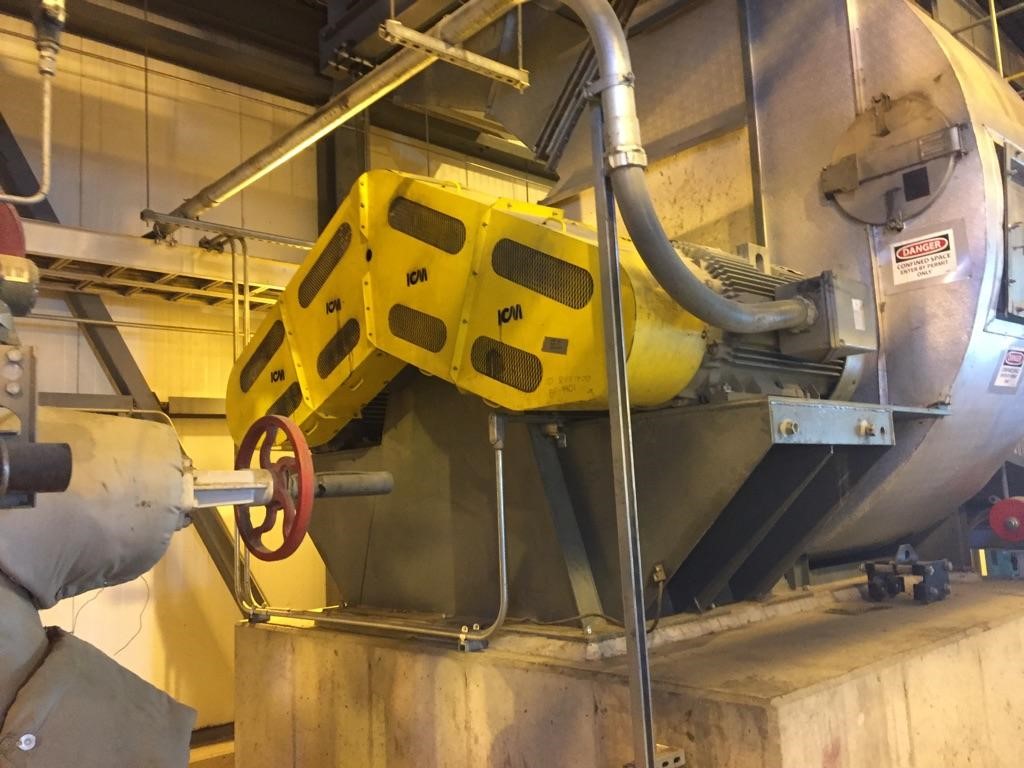Case Study – Master-Follower on a TO Fan
Introduction – Malloy Electric, in partnership with ABB drives, was able to help devise a solution to a customer’s problem. The problem and solution will be illustrated below. Neither Malloy nor ABB are responsible for any of the information listed below. This case is for illustration purposes and all results described herein are based off of customer supplied information. The customer’s name and competitor’s brand name has been removed.
Problem Definition – The customer was running brand x softstarter and the customer was seeking to reduce the peak power charges in addition to possibly varying the speed of the application. The existing softstarter was a 600HP softstarter driving twin 200HP motors. The softstarter was located in a twin bay, dual-door cabinet, figure 2. The application, in figure 1, is a thermal oxidizer (TO) fan. The TO is a critical application in the plant and is a two motor application driving a single driven shaft. These two motors are belted to the single drives. Matching speeds will be critical to make sure the belts do not slip and that the motors do not fight each other.
Another potential issue is the drives will be located in the existing softstarter panel to maintain the same conduit and feeder runs. Minimizing labor and wire needed will be a factor in addition to mitigating the heat loss of the drives in the cabinet. Malloy will be dimensionally limited in the ability to provide a solution. Standard harmonic mitigation of a DC choke or line reactor will be adequate in this system.
Problem Solution – The ABB drive solution involved utilizing ACS880 model drives. The VFDs were sized to the customer’s enclosure with the necessary ventilation verified. The drives were sized off of the amperage demand and contained the necessary accessories to meet the specified requirements. The solution was proposed as the following:
- Open loop vector control rather than closed loop. This will allow for less maintenance and fewer components to fail.
- Utilize the existing DCS to monitor the drives and instruct the master what to do. This would be controlled via a hardwire, 24V control.
- Fitting the drive into the existing enclosure would be handled by the customer with Malloy technician assistance where required.
- Commissioning and startup to be performed by an ABB certified technician provided by Malloy.
The drives were wired in a master-follower system utilizing ABB’s proprietary drive-to-drive control which allowed for precise control between the master and the follower. In addition, the ACS880 model drive allows for speed control of 10% of the motor slip when running open loop vector, something that allows this process to safely run open loop.
Conclusion – The value of the system had many total cost of ownership improvements such as reduced in rush current thus dropping the peak demand charges. This change, among others, reduced the demand by ~275,000KWH during the first month of operation.








